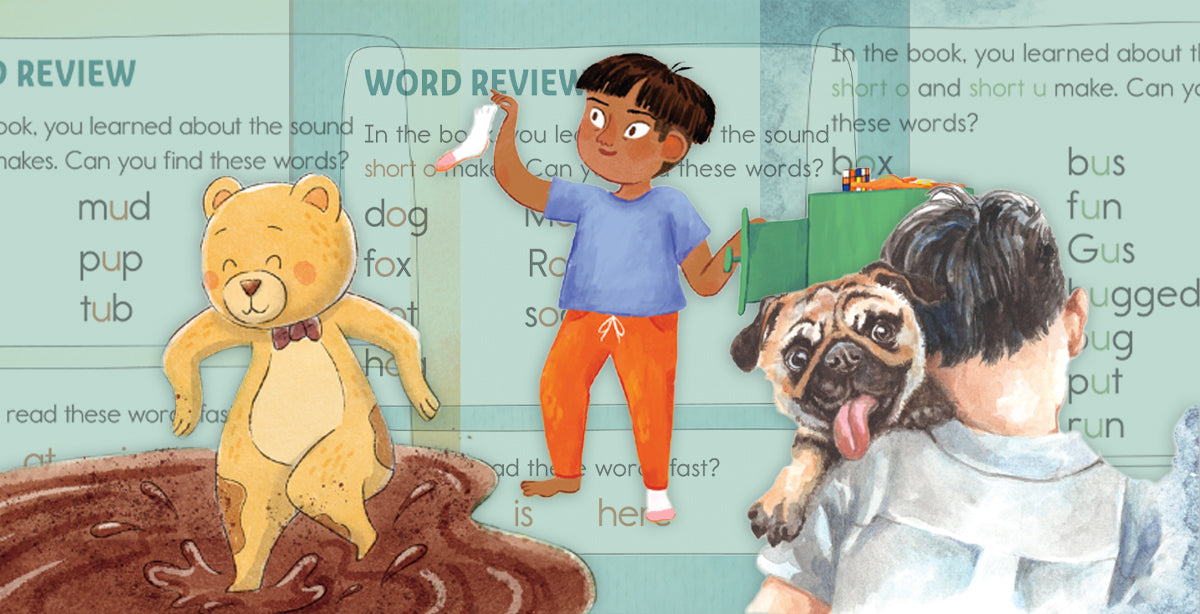Using Decodable Books to Teach Reading
When it comes to using decodable texts in the classroom, today’s educators are often divided. Many are advocating for using only decodable books to teach reading, while others say that they would never use decodable books. However, there is room for both decodable books and leveled books in our primary classrooms. Both kinds of books provide readers with important learning opportunities. Decodable books allow readers to practice phonics skills in the context of authentic reading, while leveled books are carefully sequenced to provide just the right amount of support and challenge to readers, along with opportunities to develop a rich vocabulary, background knowledge, and comprehension skills. A quality leveled reader also provides opportunities for building a sight vocabulary and decoding skills.
What Makes a Book “Decodable”?
Heidi Anne Mesmer says, “Decodable text is a type of beginning reading material in which the words have been controlled to contain letter-sounds and high frequency words that the learner has been taught.” (2001) It is important to understand that while not all leveled books are decodable, many are. It just depends on what phonics skills and sight words students have been taught and have mastered.
When selecting a decodable book to use, it is important to consider the following:
- Does the story make sense?
- Will the story provide opportunities to practice new and previously taught phonics skills?
If you have just taught students short o, then your decodable book should have a number of short o words that provide students with opportunities to practice decoding short o words. But if you have already taught short a and i, then short vowel words with a and i words would also be considered decodable.
- Will students enjoy reading the book?
Whether the book is a decodable or leveled book, the text should be something students will want to read again and again. Rereading provides opportunities to increase fluency. All good books for beginning readers need beautiful illustrations and photos, as well as storylines that engage students’ attention.
Using Pioneer Valley Phonics Storybooks in a Purposeful Sequence
Phonics Storybooks, the latest collection from Pioneer Valley Books, meets all three of these criteria. When used in a purposeful sequence, readers will have the opportunity to practice their decoding skills with texts that are textually engaging, visually exciting, and filled with natural sounding language.
Here is an example of a sequence that you might use: After you have taught the short o sound, have students read The Sock. This book provides many opportunities for students to read sight words they have been previously taught and to decode short o words. (Check out Pioneer Valley Storybooks)

Then you might teach short u and have students practice their new skill with Fun in the Mud.

After students have had opportunities to learn both the short o and short u sounds, you can use the book Dot the Pug to provide practice reading words with both the short o and short u sounds.

And here is a Level C reader, A Dinosaur Snack, that would partner up with these stories beautifully, providing opportunities for students to practice new decoding skills as well as vocabulary and comprehension.

*
Recently, I went to pick up my granddaughter Mae. She was sitting reading a book when I drove up. As she walked to the car, she said, “Meme, I might want to keep reading when I get to your house instead of playing with Papa, because my book is just so good.” Then she said, “You know, reading used to be a bit hard. But now it’s not. It’s just fun.”
I hope that every book I write is helping you foster readers who feel the same way as Mae! Our classrooms need to be filled with all kinds of books for children to read and enjoy. And our goal must be for all children to see reading not as something hard but instead as “just fun”!
For more on decodable books, I recommend this blog post from Heidi Ann Mesmer.





